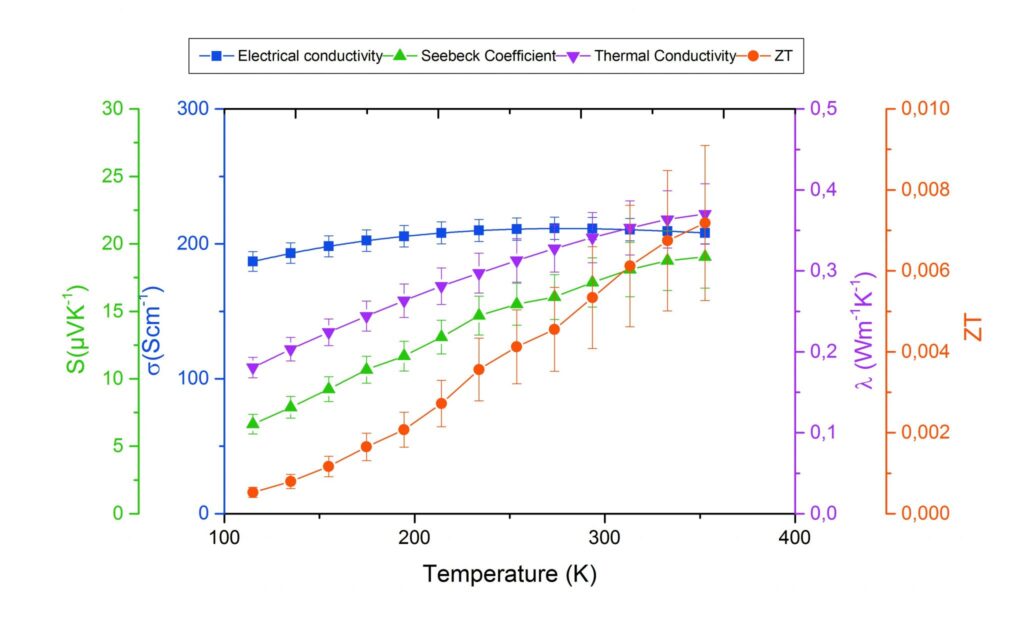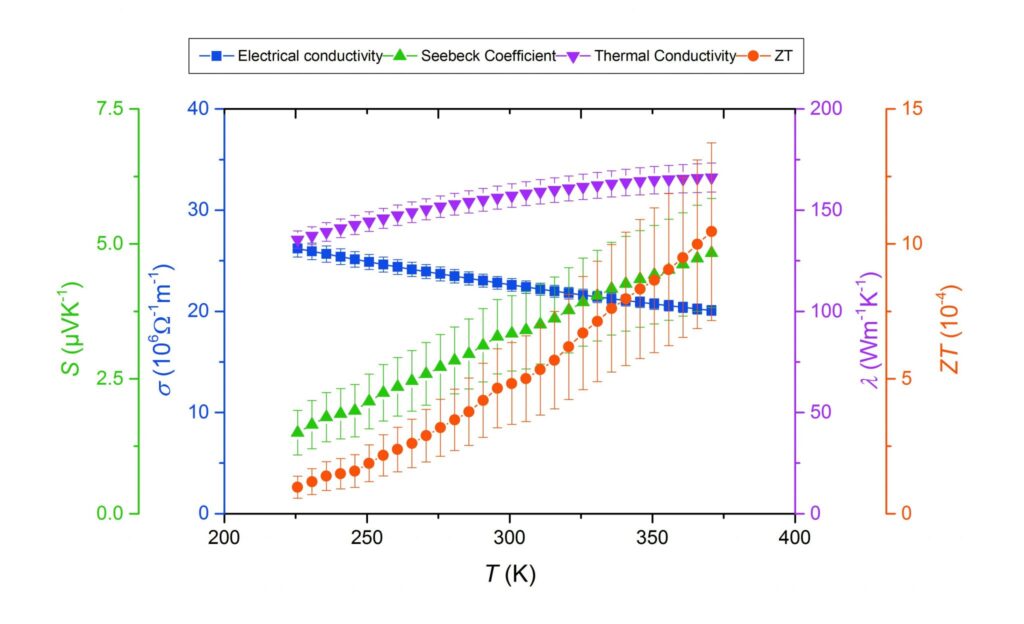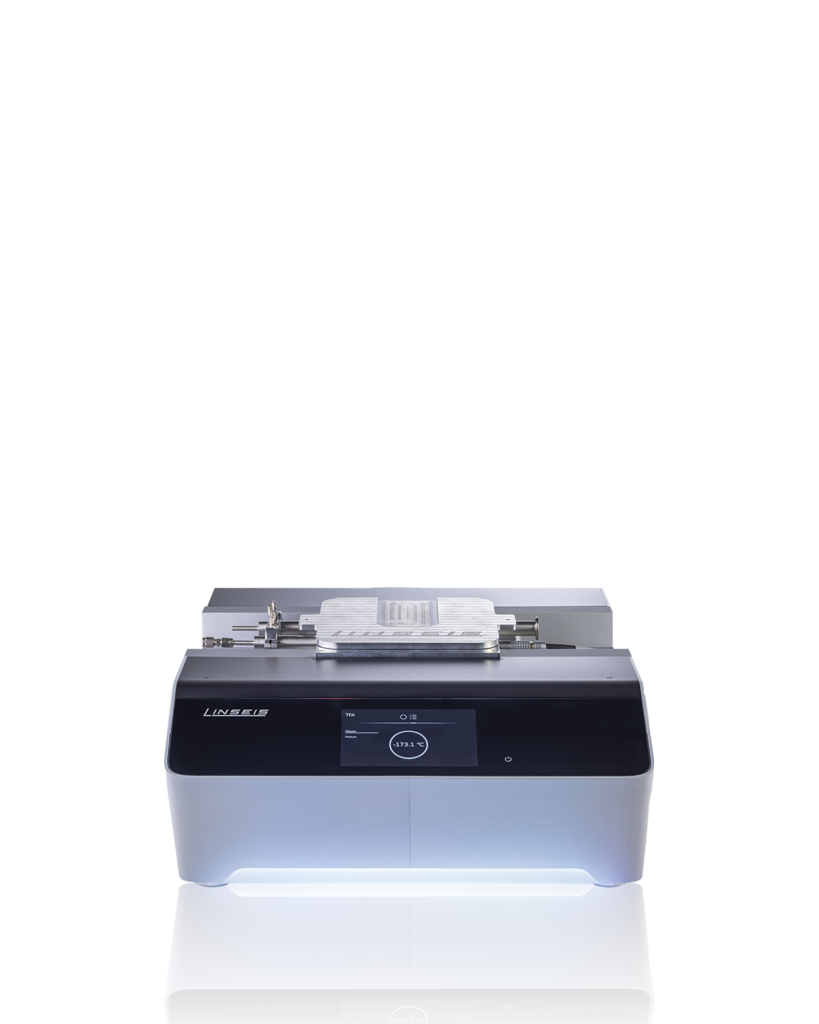Thermoelectric materials are used in thermoelectric generators that convert a temperature gradient into a voltage. The so-called figure of merit (FPI) is used to characterise the performance of a thermoelectric material. To calculate the figure of merit, thermal conductivity, electrical conductivity and the Seebeck coefficient must be known. Metallic thin films have lower thermal and electrical conductivities compared to the corresponding bulk materials, while the Seebeck coefficient is less affected, resulting in higher ZT values. Metallic thin films are frequently used in industry, for example in the manufacture of integrated circuits.


App. No. 02-013-002 TFA – thermoelectric thin film – thermoelectric properties – metals and alloys
2
The electrical conductivity, the thermal conductivity and the Seebeck coefficient were measured in a temperature range from 225 K to 375 K on a nanolayer of gold (Au) with a thickness of 100 nm, which was produced by DC magnetron sputtering. ZT was calculated from these parameters. The measured thermal and electrical conductivity of this thin film was approximately half that of the bulk material. The results, which showed a clear influence of the classical size effect, were verified and were in perfect agreement with the Wiedemann-Franz law.

